EN 407: 2004 Standards for Protective Gloves Against Thermal Risks
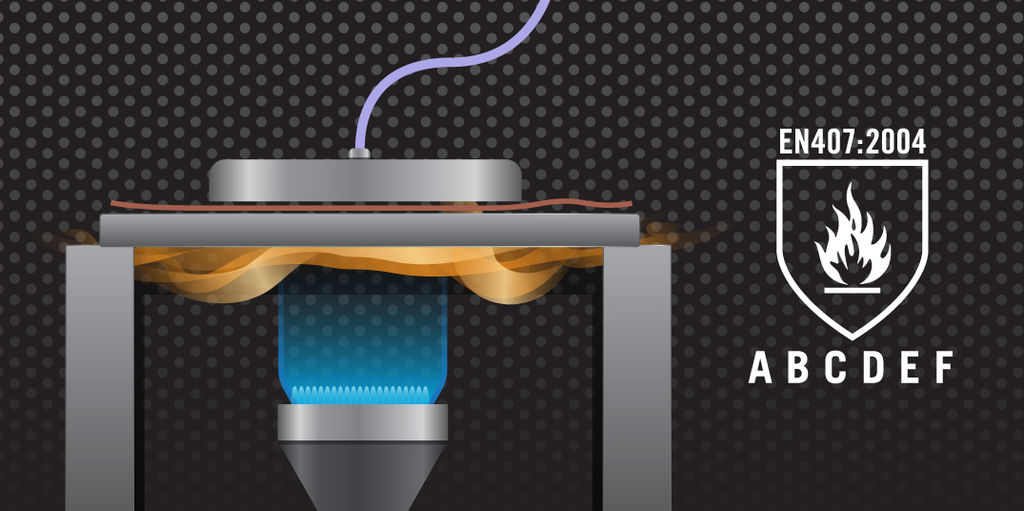
If you can’t stand the heat (and/or fire) reach for a pair of EN 407: 2004 thermal-resistant work gloves and extinguish high-heat risks in the workplace. Now, before (safely) releasing your inner pyro, it’s important to understand the varying degrees of EN 407: 2004 in order to select the right thermal-resistant work gloves. EN 407: 2004 is an international glove standard that consists of 6 independent performance tests designed to measure and define thermal work gloves.
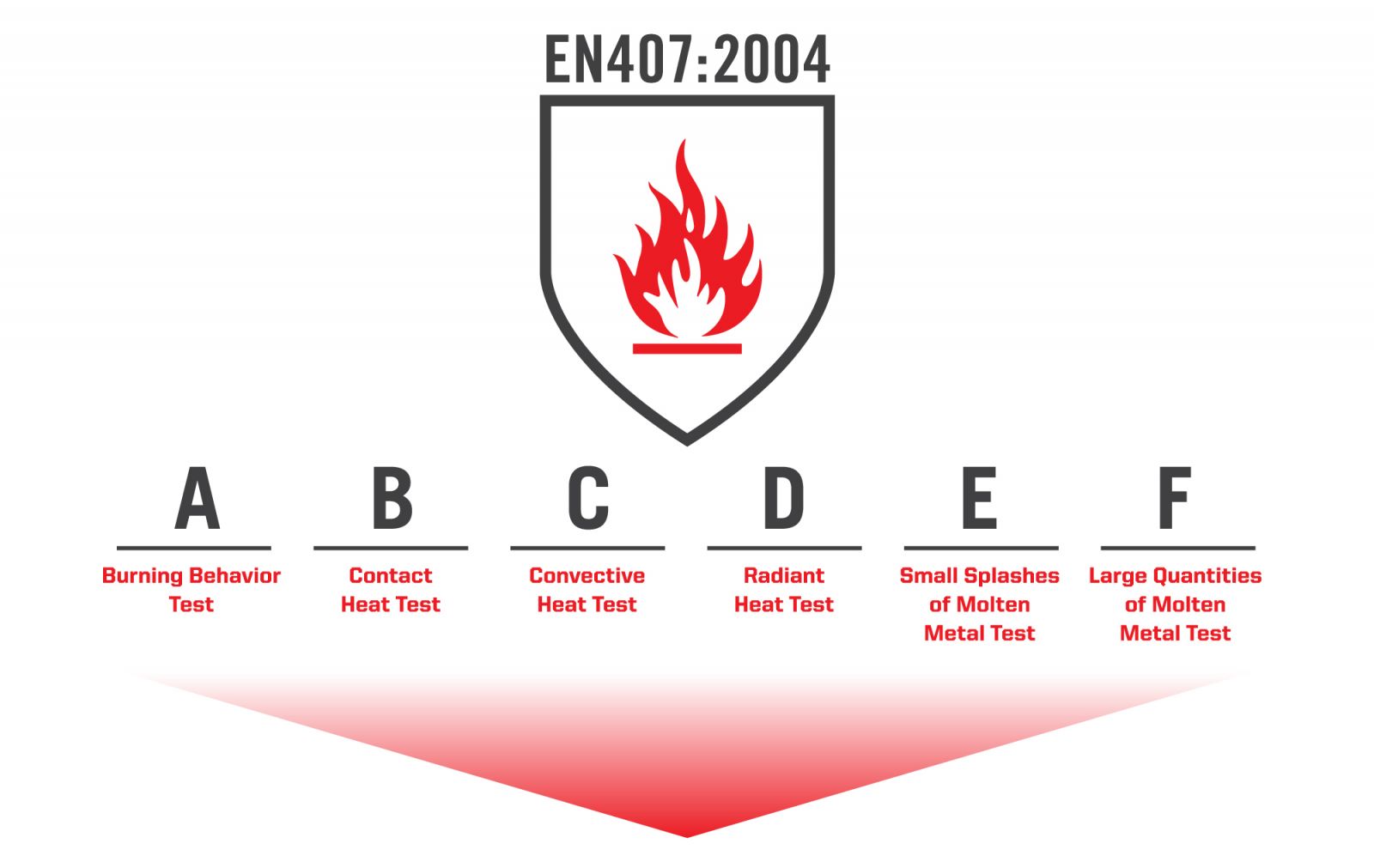

Work gloves designed for high-heat exposure must be tested using the vertical flame test to measure both after-burn time and after-glow time for EN 407: 2004 certification. This test measures the ability of the material to extinguish itself after being ignited using 4 performance levels.
Thermal protection from contact heat is determined by measuring a temperature rise of 10° C (50° F) on the inside of the glove. This is achieved by placing sample material on pre-heated plates and recording the temperature rise at each level for at least 15 seconds. When the Contact Heat performance level reaches 3 or 4, the Burning Behavior test must be performed and achieve at least a level 3, otherwise the maximum performance rating for Contact Heat will be reported as level 2.


Thermal protection from convective heat is determined by measuring the rate of temperature rise inside the glove when put in contact with a controlled gas flame. The convective heat test is used to measure a temperature rise of 24° C from the top of the cuff to the back of hand and palm. A level of performance in Convective Heat shall only be reported if a performance level 3 or 4 is obtained in the Burning Behavior test.

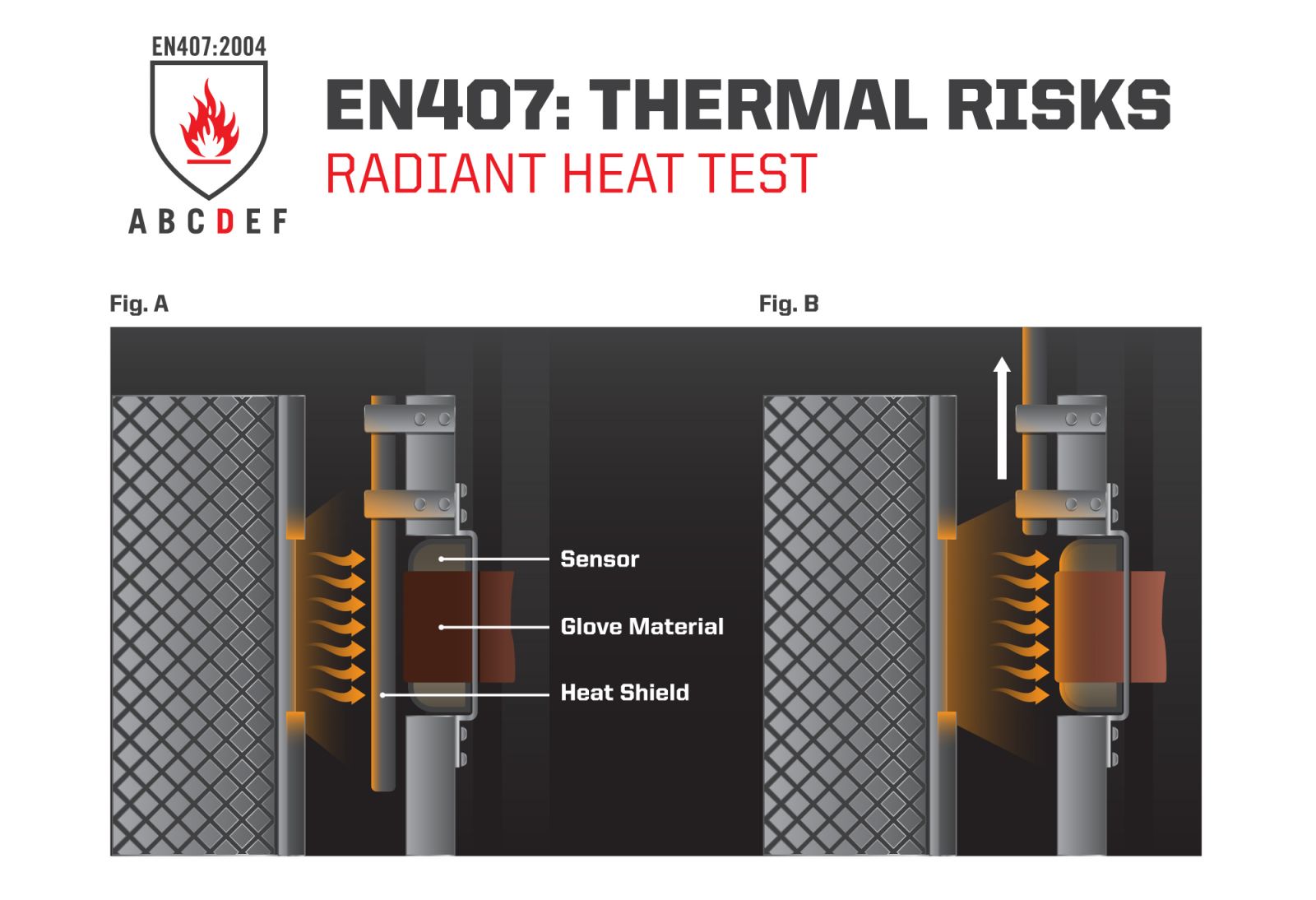
Thermal protection from Radiant Heat is determined by measuring a temperature rise of 24° C (75° F) inside the glove when exposed to a defined heat source. The Radiant Heat test ensures the glove materials can resist high-heat through the back of the hand for a designated time period.


Thermal Resistance to Small Drops of Molten Metal testing is measured by the number of droplets that produce a temperature rise of 40° C (104° F) inside the glove. This test measures the back and palm in a closed chamber where the number of metal droplets is determined and the lowest mean number of 4 tests is recorded.

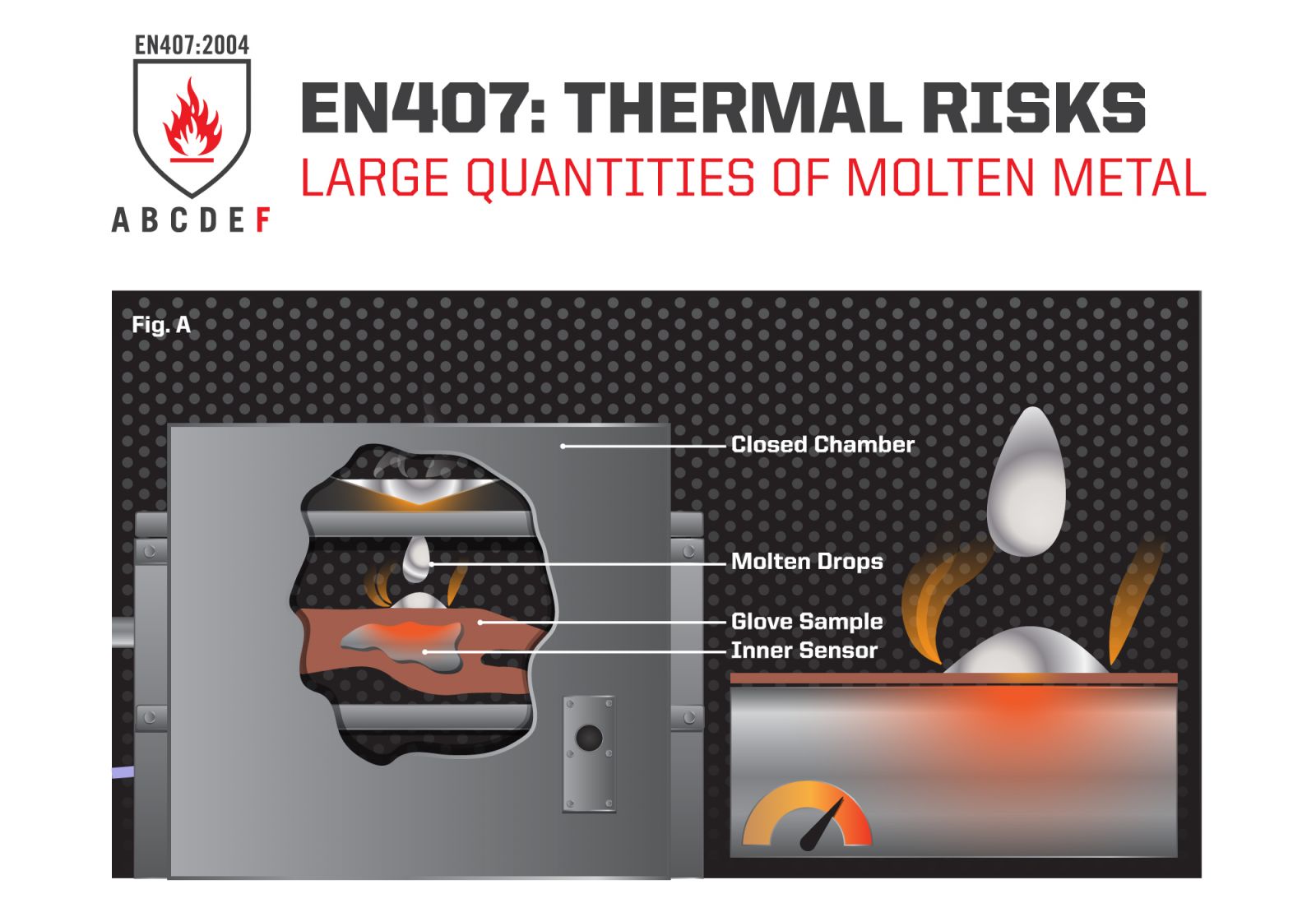
Thermal Resistance to Large Quantities of Molten Metal testing is measured against PVC foil skin to simulate the inside of the glove, and molten metal is poured over the test sample. The skin simulant is assessed after each test and should not show any smoothness to the grained surface. The Thermal test is considered failed if steel droplets stick to the glove or if the glove ignites or is punctured.

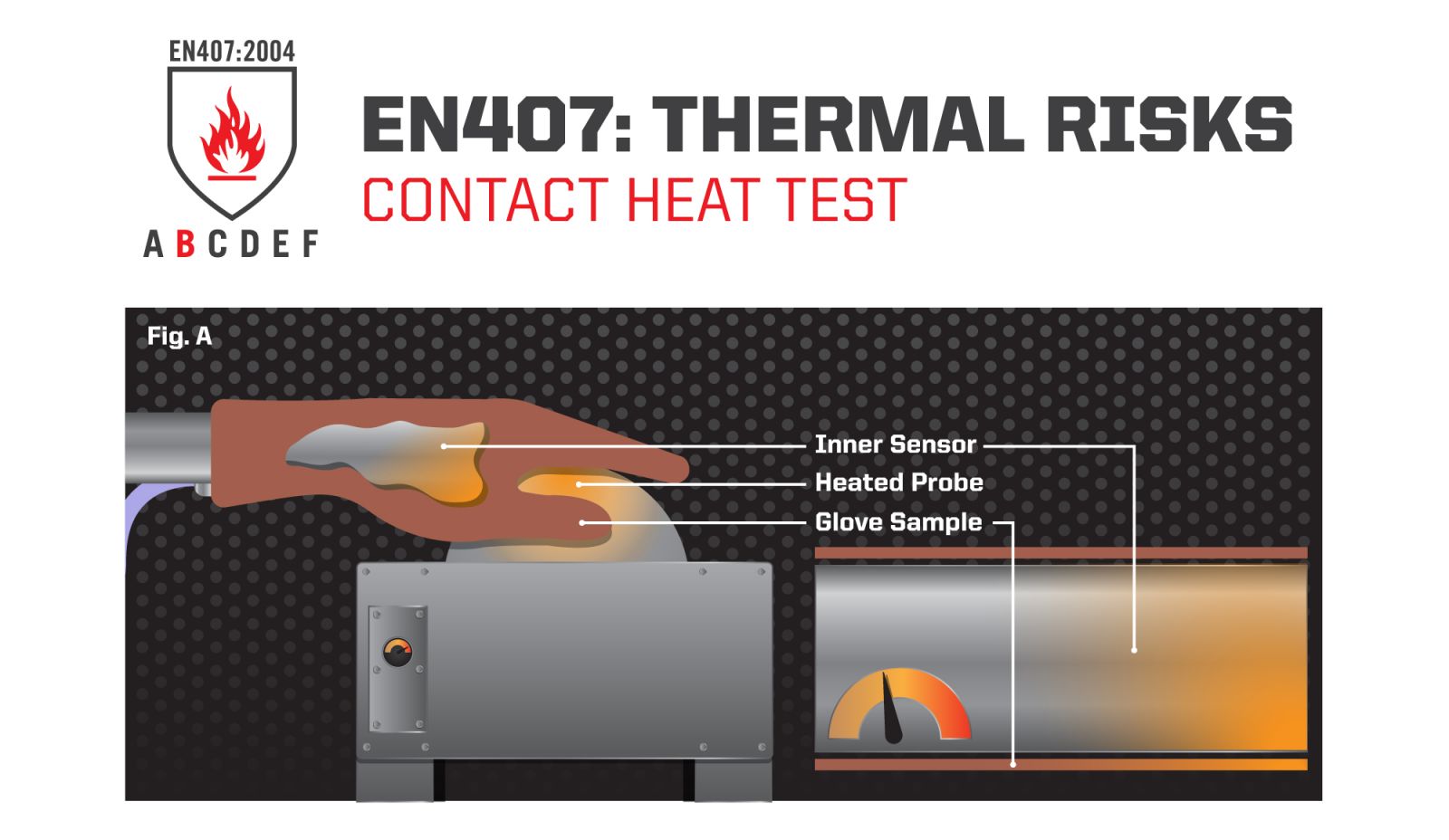
.jpg)
